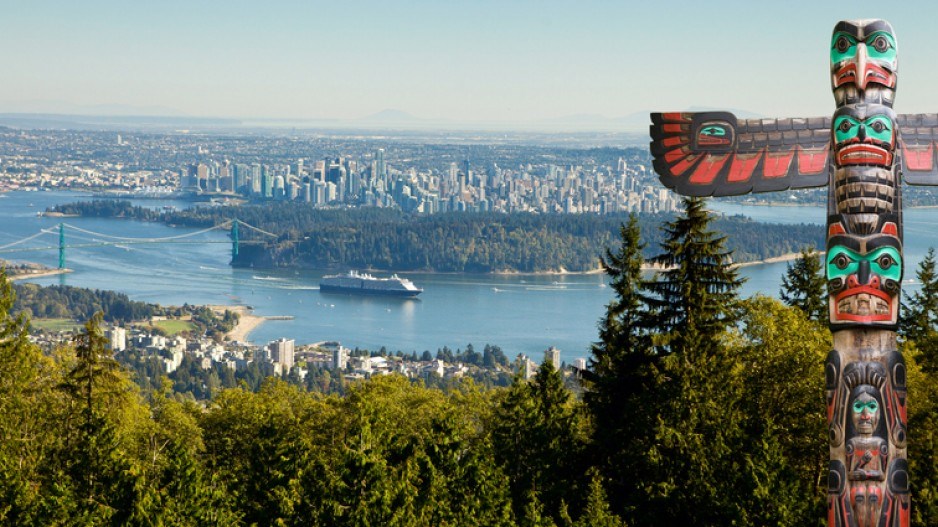There is a major opportunity to advance First Nations’ global trade aspirations – but only if B.C. stakeholders do more to take advantage of that
opportunity, one leading researcher says.
The global arts market is ripe with demand for Indigenous creations, said University of British Columbia (UBC) professor Christopher Gaston. The
province should focus on helping First Nations communities reach that market, estimated at $2 billion globally, given the recent focus on economic reconciliation between Canada and Indigenous Peoples.
“I think the potential that exists for expanding branding for our First Nations artists is amazing,” Gaston said. “Being a marketing person, I always love the idea of selling a story rather than just selling a product. And First Nations work lends itself so well to that.”
Gaston, an associate professor of wood science who specializes in markets and economics, was the driving force behind the 2016 Opening Doors program, which aimed to support B.C. coastal First Nations artists in building their capacity to access foreign markets.
While the project has concluded, Gaston said he continues to work with a number of artists on the UBC campus, utilizing technology, including robotics, to help create bigger art pieces, such as totems.
Recent visits abroad to trade shows in markets like Japan and Europe demonstrated there is still a high level of demand for Indigenous art, said Gaston, but B.C.’s presence is largely absent.
“I’ve worked with First Nations artists to go to things like the Japan Home Show or BAU, which is the big architect-builders show in Munich,” Gaston said. “What these shows all had in common was the tremendous interest in Indigenous art, including potential buyers from large-scale sectors like hotels and building consortiums.
“For design elements within architectural designs, the demand is huge. But we haven’t really stepped up to deliver on that demand in any big way.”
Back in May, the Canada China Business Council released a report on preparing Indigenous groups to take on the Chinese market.
The report focused on the potential of First Nations communities – which increasingly exercise ownership over land and resources – to explore direct trading with markets like China to boost economic prospects within those communities.
The interest in bolstering trade between First Nations groups and Asia first peaked in the 2010s, when the Assembly of First Nations led a trade mission to China to explore trade links. But activity has slowed significantly, because Indigenous-produced commodities like lumber are not properly linked to Canadian trade infrastructure and face hurdles to reaching Asian markets in the required quantities.
Gaston said there are prominent examples of other Indigenous communities that have fully embraced the global art market through strong, unified branding and marketing efforts. First among those, he said, are the Maori in New Zealand.
“The Maori artists have been very successful globally,” Gaston noted. “Their art is in demand with collectors literally around the world, and you can’t go into a gallery of Indigenous art here in Vancouver or in Toronto and Montreal and not see Maori representation. We are not there yet.
“To me, it really has to be a question of scale. With support for the Maori, in New Zealand, it’s basically nationwide. They are known for how prolific they are working and supporting the creation and marketing – through various museums – of all mediums of art, including carvings, paintings and weavings as well as music and dance.”
In Canada, the Indigenous art scene has been characterized by a few icons, such as Bill Reid, whose personal name-brand has risen to a high level of global recognition. But Gaston said there are many more talented artists who need to not only produce more art, but also gain more market access abroad.
One way to facilitate that growth may be through the use of technology. Other Indigenous artists globally have used limited-edition digital prints to produce larger numbers of certain art pieces – a quicker, cost-efficient way for B.C. artists to fulfil global demands.
Gaston also noted that – through art such as wood carvings – First Nations communities can open up the entire global lumber market through reputation built through high-end art.
That, he said, may be the biggest opportunity available. “I think that’s the most exciting prospect over the longer term,” he said.
“Branding can evolve over time to include things like doors, windows and flooring, as well as millwork and other items.
These things are value-added and present a big opportunity beyond just exporting lumber, and hopefully it can be achieved through continued involvement in the really high-end market, which is art and furniture.”




